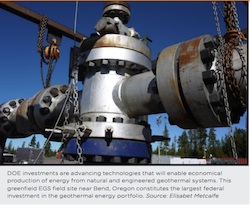Three federal U.S. agencies have renewed their support of hydropower in America. The Department of Interior and the Department of Energy (DOE) in conjunction with the Civil Works division of the U.S. Army of Corps of Engineers, have extended their MOU for hydropower for five additional years. The purpose of the MOU is to meet the need for affordable energy, in part, through hydropower.
 “This agreement among three key federal agencies is great news for the federal hydropower system, and even greater news for the millions of American homes and businesses that rely on clean, affordable, and reliable hydropower,” said Voith Hydro U.S. President and CEO Bob Gallo. “In the MOU’s first five years, the agencies have already made significant progress in laying the groundwork for expanded hydropower production, with tangible results to show for their efforts. Voith is pleased to support efforts to strengthen the backbone of American hydropower, and believe the agencies’ continued collaboration will create jobs and economic growth throughout the U.S.”
“This agreement among three key federal agencies is great news for the federal hydropower system, and even greater news for the millions of American homes and businesses that rely on clean, affordable, and reliable hydropower,” said Voith Hydro U.S. President and CEO Bob Gallo. “In the MOU’s first five years, the agencies have already made significant progress in laying the groundwork for expanded hydropower production, with tangible results to show for their efforts. Voith is pleased to support efforts to strengthen the backbone of American hydropower, and believe the agencies’ continued collaboration will create jobs and economic growth throughout the U.S.”
According to Voith, Phase II of the MOU will focus on several key areas:
- Improving the accuracy and reducing costs of water flow measurement technology.
- Reducing the size and weight of generators for new hydropower projects, potentially leading to reduced costs and increased generator output for existing facilities.
- Developing low-impact, low-cost hydropower technologies suitable for demonstration and deployment at non-powered dams and conduits, potentially providing power for 1.5 million homes.
- Enhancing the environmental performance of hydropower turbines for responsible deployment.
- Assessing the risks to U.S. hydropower generation and water infrastructure posed by climate change.
Since the last MOU, signed in 2011, non-federal development at Bureau of Reclamation and Army Corps facilities has increased, with over 70 additional projects in some stage of development.









